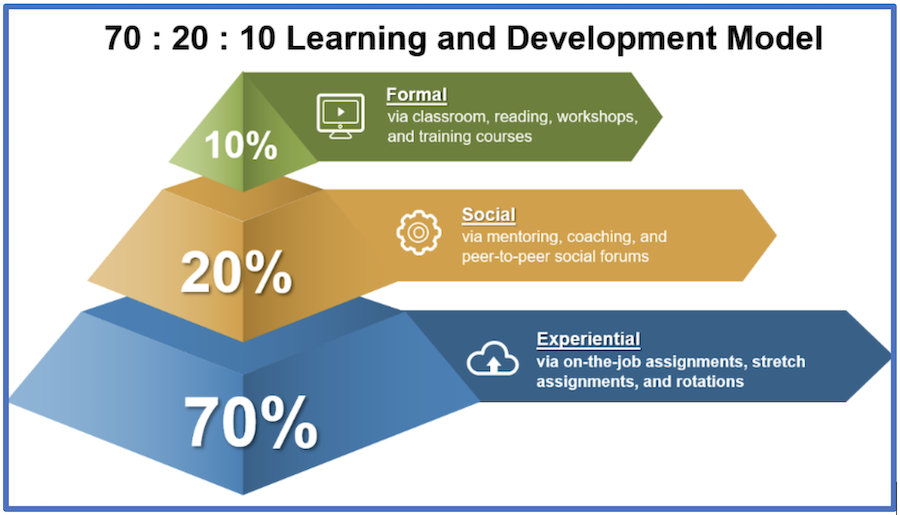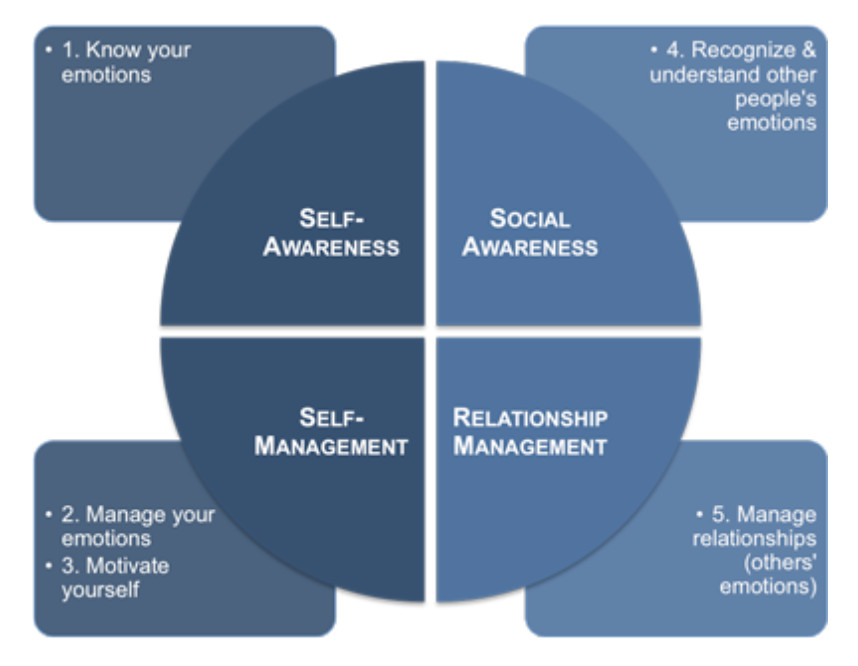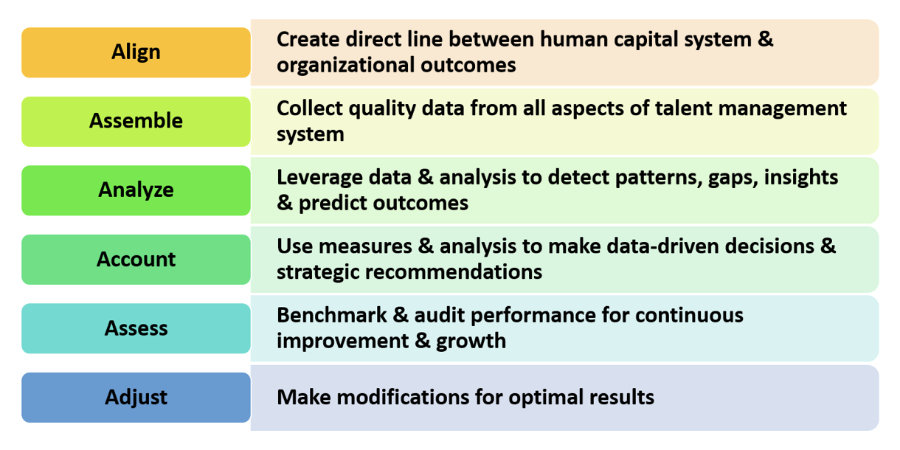
Eight Ways to Improve People Processes in Your Organization
People are a critical part of every organization’s balance sheet. Investments related to acquiring, retaining, developing, and inspiring employees are critical to your organization’s success, requiring a thoughtful strategy to build and maintain a productive workforce.
 CHCI’s talent life cycle, called PRIDALRM, refers to the interrelated strategies that support the most important assets of an organization – the people. Most of the activities that occur within an organization’s human resources, human capital, and talent management divisions can be distilled to one of the eight components highlighted in the PRIDALRM image.
CHCI’s talent life cycle, called PRIDALRM, refers to the interrelated strategies that support the most important assets of an organization – the people. Most of the activities that occur within an organization’s human resources, human capital, and talent management divisions can be distilled to one of the eight components highlighted in the PRIDALRM image.
CHCI uses PRIDALRM to diagnose problem areas and develop targeted remediation efforts. This systematic approach to organizational performance encourages the interconnection among elements and alignment to outcomes. Let’s review the eight components.
Starting with the “north star” of the talent life cycle, the workforce PLAN sets up a framework that allows organizations to address current needs and identify future opportunities and threats. It helps answer the following questions:
- Does the organization’s workforce have the right capabilities today?
- What resources will the organization need to be successful in five years?
- How can our human capital approach give us a competitive advantage in our industry?
The next component, RECRUIT, is about talent acquisition. Talent acquisition is the organizational process which fills current and future positions and manages the transition of new employees to becoming fully productive. According to research commissioned by Glassdoor, 95% of companies admit to hiring the wrong people every year. In fact, Society for Human Resources Management (SHRM) identified that the cost of a bad hire could be up to five times the amount of a bad hire’s annual salary; so hiring the wrong person is a costly mistake. Here are three categories of questions to ask candidates at the initial hiring process to help determine if candidates are a good fit in your organization:
- Prior experience. Describe the work at your previous employer and specific projects you worked on. Describe the tools and techniques you used in that job.
- Reasoning. How do you think your skills will impact a specified project?
- Motivation. What particularly excited you about [organization name] and what we aspire to achieve?
The third element of the talent life cycle is INSPIRE. Think of inspire as the efforts made to instill and harness employees’ and leadership’s passion. Specifically, this is about employee engagement, which can be seen through the dedication, persistence, and effort in an employee’s work or overall attachment to the organizational mission. The root causes of a disengaged workforce can be bucketed into six categories:
- Low trust culture
- Lack of transparency
- Low employee empowerment
- Uninspiring senior leadership
- Shortage of resources
- Poor support services
The principal question to ask is how does the human capital system nurture engagement and inspiration? When employees know the organization cares about their growth and career, they are more engaged, do better work, and are less likely to leave. That leads us into the next component – DEVELOP.
Meaningful workforce development programs have many connections to the rest of the talent life cycle, from mitigating skill gaps in the planning phase to building effective leaders and minimizing employee retention. It is best practice to develop your workforce using the 70/20/10 Adult Learning and Development model, which suggests that employing a combination of the three types of learning approaches, outlined in the image below, will make learning more cohesive and natural.

Closely aligned to DEVELOP, the fifth component of PRIDALRM is about assignment and competencies. ASSIGN is the ability to use your understanding of an individuals’ knowledge, skills, abilities (KSAs) to intentionally delegate tasks, assign work to teams, and provide developmental opportunities. There are four strategies for effective assignment:
- Create a delegation strategy for your team. Dedicate 1-2 hours at the end of each week to review the strategy, recognizing what’s unique about individual skills and experiences. Reduce or eliminate assignments that don’t align with the team’s purpose.
- Clarify roles. A key element of effective assignment is making sure your team members are clear on their roles and responsibilities. When there is clarity for all, it is easier to assign work, review work, and set performance expectations. This can also help identify talent gaps required for the project.
- Set clear expectations. Continually stating the objectives you are trying to achieve, as well as emphasizing the level of effort and engagement you expect, helps focus the team. Create a culture that values outcomes over hours worked by openly praising strong performance.
- One-on-one communication. Making time to have individual conversations will ensure people stay motivated and engaged. It provides an opportunity to discuss career aspirations and gather their insights on the project.
As the sixth component indicates, leadership (LEAD) is needed to support and reinforce planning, recruiting, inspiring, assigning work, and developing the workforce. Effective leadership drives the bottom line, leading to higher profits, lower turnover, and improved results. The actions of senior leaders and direct supervisors have a strong impact on employee engagement. Emotional intelligence (EI) is a critical leadership competency, for both formal and informal leaders. The five domains of Goleman’s EI model have become the de facto standard for applying emotional intelligence in the workplace. The image below represents these five domains in four quadrants: two represent personal competence and two represent social competence.

Employee retention, the ability of an organization to RETAIN its employees, is also critical to the talent life cycle. Hiring is difficult, timely, and costly. Once hired, it typically takes eight months for a new employee to get up to full productivity, according to the Allied Workforce Mobility Survey. Employees that have been with an organization the longest are the most familiar with the company’s structure, policies, and knowledge. Below are some important statistics to consider from the Bureau of Labor Statistics that illustrate the importance of employee retention:
- 25% of employees leave organizations due to lack of recognition.
- 15% of employees leave because of money.
- 30% of employees leave because they don’t like their manager.
Finally, the MEASURE component provides a tangible linkage to all components in the talent life cycle. Metrics and measurements that are analyzed and communicated provide evidence of the system working effectively as a whole and which components need specific focus and attention. Performance measurement drives continuous improvement. Remembering the “6 A’s” of performance measurement will help you develop and/or refine your system:

In summary, the eight components that make up CHCI’s talent life cycle approach, PRIDALRM, align all major people process functions. These functions support the organization’s most important assets – their people – and ensure that the investment in its people is strategic, integrated, and driving results.
Do you want to learn more about maximizing your talent life cycle? Does your organization want to optimize its people processes and enhance performance? Learn more by contacting us.


Leave A Comment